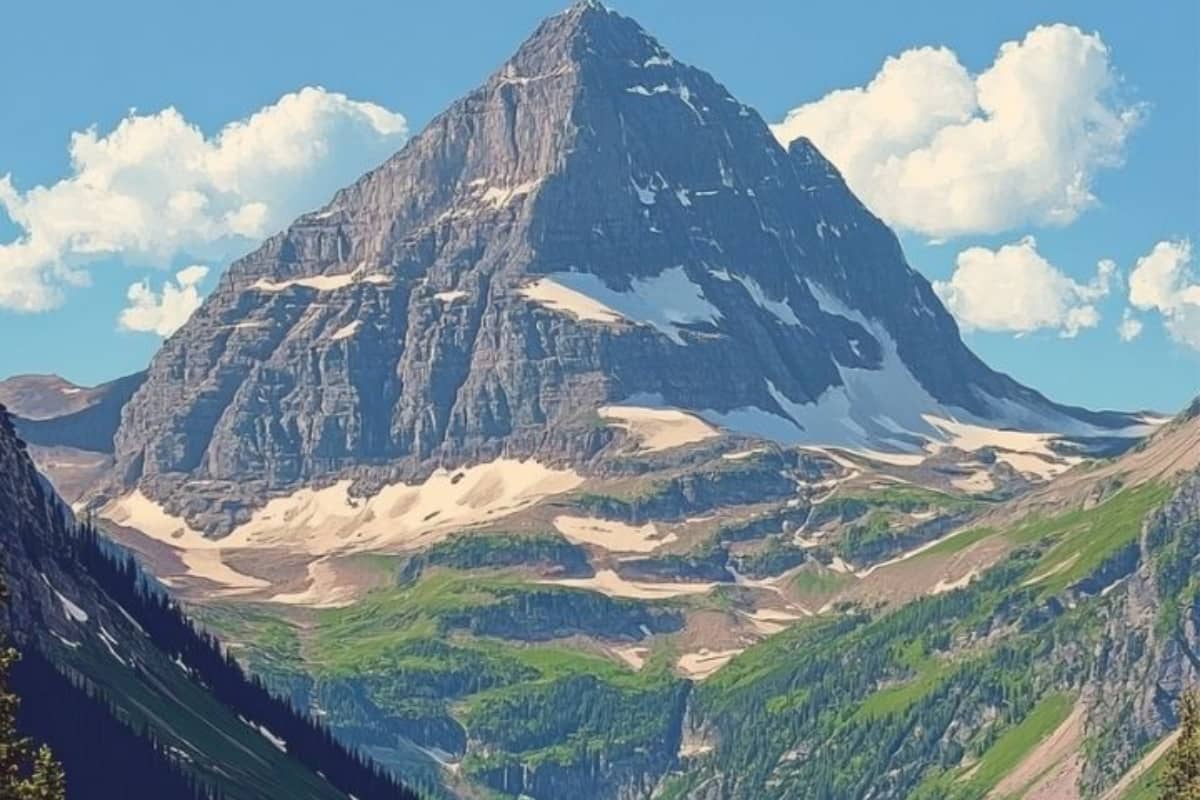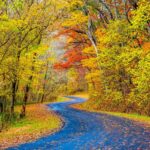Glacier National Park, nestled in the Rocky Mountains, is an adventurer’s paradise with its stunning landscapes, rugged trails, and rich wildlife. However, amid the breathtaking beauty lie hidden dangers that every visitor must be aware of to stay safe. Whether you’re an experienced hiker or a casual visitor, these risks should never be underestimated. Here are seven dangers in Glacier National Park that demand careful attention.
1. Bear Encounters: More than Just a Sight
One of the most well-known dangers in Glacier National Park is the risk of encountering bears, specifically grizzly and black bears. Both species are native to the park, and while they are majestic to observe, they pose a serious threat if encountered up close.
Bear attacks, although rare, often happen when hikers inadvertently surprise the animals. Hikers are advised to carry bear spray at all times and know how to use it. Unlike pepper spray for humans, bear spray is a proven deterrent that can save lives in emergencies. Making noise, hiking in groups, and staying on designated trails significantly reduce the chances of a dangerous encounter.
It’s also crucial to follow park guidelines about keeping food and garbage secured. Bears attracted to human food can become aggressive, leading to dangerous encounters. Keeping a minimum distance of 100 yards from bears is not just a guideline—it’s a lifesaving rule.
2. Treacherous Waterways: The Hidden Killers
The glacial-fed rivers and lakes in Glacier National Park are not just beautiful—they’re dangerously cold and fast-flowing. Many visitors underestimate the threat posed by these icy waters, which can lead to hypothermia within minutes of exposure.
During summer, the temptation to wade or swim in the picturesque waters is high, but the extreme cold can render a swimmer incapable of movement or clear thought very quickly. Additionally, rocks along riverbanks and lakeshores can be deceptively slippery, increasing the risk of falling into the frigid waters. Those who venture too close to these bodies of water without realizing the danger may find themselves in life-threatening situations.
Staying a safe distance from the water’s edge and avoiding slippery rocks are simple precautions that can prevent accidents. Visitors should admire the beauty of the lakes and rivers from afar and resist the temptation to swim or stand too close.
3. Rugged and Uneven Terrain: A Hiker’s Challenge
Glacier National Park’s trails offer some of the most rewarding hikes in North America, but they are not without their perils. The park’s famous Highline Trail and Grinnell Glacier Trail are known for their narrow paths, steep drop-offs, and rugged terrain. Even experienced hikers can find themselves in precarious situations, especially when the trails are wet from rain or snowmelt.
Certain sections of the Highline Trail, for example, require hikers to hold onto cables as they navigate ledges high above the valley floor. Although the views are breathtaking, the risks are real. Slips and falls on these trails can be fatal, particularly if hikers are not equipped with proper footwear or fail to pay attention to trail conditions.
Additionally, unexpected weather changes—common in Glacier—can turn an easy hike into a dangerous endeavor. Thunderstorms, heavy rain, or even snow in higher elevations can quickly create hazardous conditions on the trails.
4. Mountain Lions, Ticks, and Rodents: The Lesser-Known Hazards
While bear sightings are the most discussed wildlife danger, Glacier National Park is home to other animals that pose serious risks to humans. Mountain lions, though elusive, can be found throughout the park. They tend to avoid humans, but if threatened, they can be deadly. Visitors should never hike alone and should always be vigilant when walking through dense areas.
Ticks, especially during the spring and early summer, are another hidden threat in Glacier. They can carry diseases like Rocky Mountain Spotted Fever and Lyme disease. After spending time in grassy or wooded areas, checking for ticks is essential, along with wearing long sleeves and pants.
Deer mice, which carry Hantavirus, can also be found in the park. This virus, transmitted through rodent droppings and urine, can be fatal. Keeping campsites clean and avoiding areas where rodents are active can help prevent exposure.
5. Roadside Bears and Slippery Roads: Driving Hazards
The Going-to-the-Sun Road, one of Glacier’s most iconic attractions, is both thrilling and treacherous. The road offers breathtaking views but is narrow, winding, and features sharp drop-offs. Driving conditions can become dangerous, especially during rain or when ice forms at higher elevations. Accidents along this road are not uncommon, so cautious driving is a must.
In addition to road conditions, wildlife such as bears frequently appear along the roadside. Although spotting a bear might seem like the perfect photo opportunity, stopping too close to these animals can put both visitors and the bears at risk. Bears that grow accustomed to human presence may approach vehicles, increasing the chances of being hit by cars or becoming aggressive.
6. Rapid Weather Changes: The Unpredictable Climate
Glacier National Park is known for its rapidly changing weather. A sunny day can quickly turn into a downpour, or temperatures can plummet unexpectedly, even in summer. Hikers who are unprepared for these sudden changes can find themselves in dangerous situations.
Hypothermia is a real threat, especially at higher elevations where temperatures drop more rapidly. Rain-soaked clothing can lower body temperatures to dangerous levels, while strong winds can intensify the cold. On the other hand, heat exhaustion can occur in the park’s sun-exposed areas, where shade is scarce.
Visitors should always dress in layers, carry extra clothing, and pack plenty of water. Being prepared for both extremes—cold and heat—ensures a safer experience.
7. Altitude Sickness: A Silent Threat
While not unique to Glacier, altitude sickness is a danger many visitors don’t anticipate. The park’s higher elevations can cause symptoms such as dizziness, nausea, and shortness of breath. These symptoms can hit suddenly and without warning, making hiking or driving at high altitudes a serious challenge for those not acclimated.
To avoid altitude sickness, visitors should take time to acclimate, avoid strenuous activity at higher elevations until fully adjusted, and stay hydrated.
Glacier National Park is a treasure trove of natural beauty, but it’s also home to dangers that should not be overlooked. From encounters with wildlife to the risks posed by its rugged terrain and unpredictable weather, preparation is key. Staying informed about the park’s hazards and following safety guidelines ensures that visitors can enjoy the park’s majesty without unnecessary risk. Following these precautions, respecting wildlife, and staying aware of your surroundings will keep your adventure safe and enjoyable.






